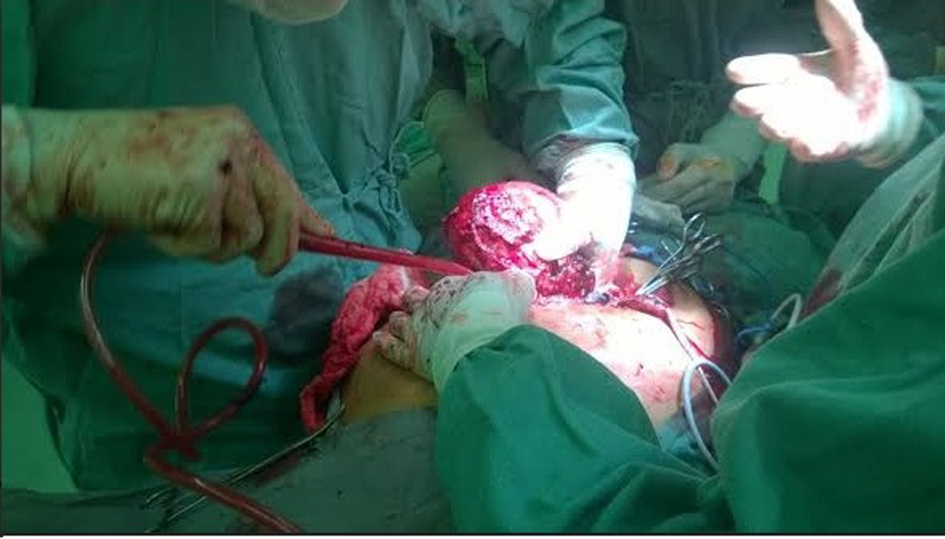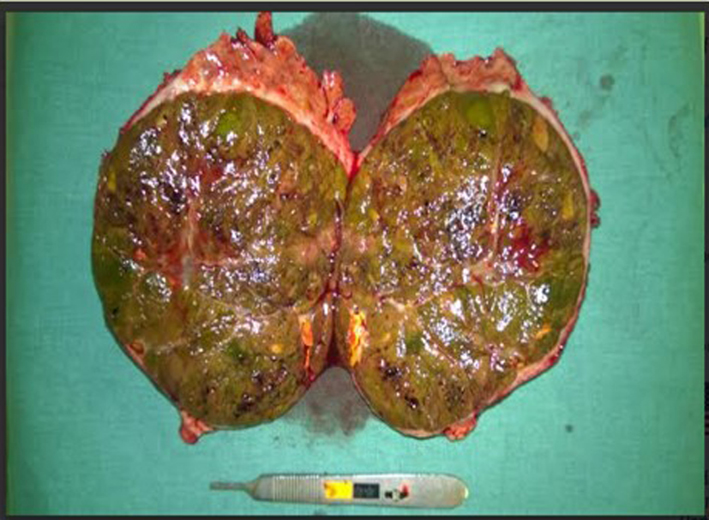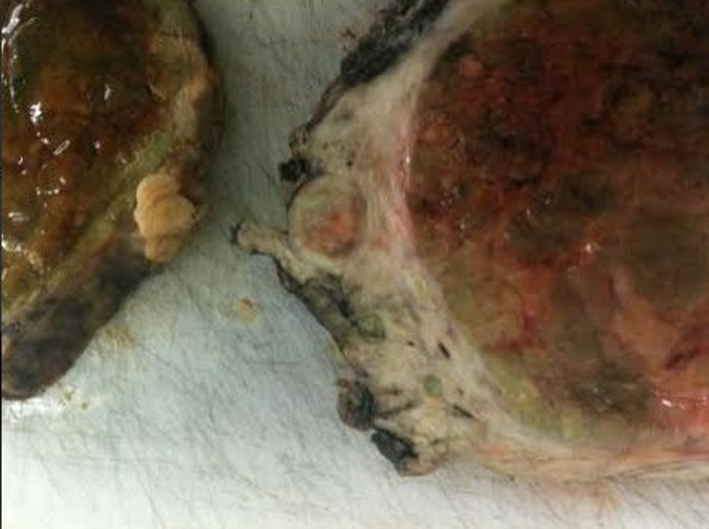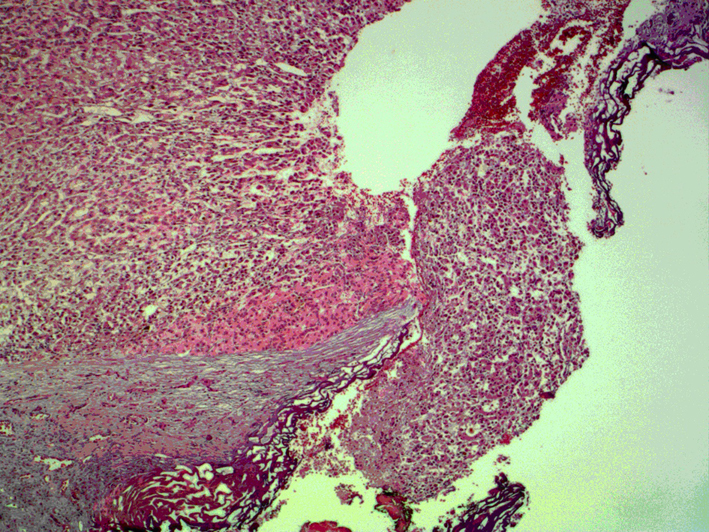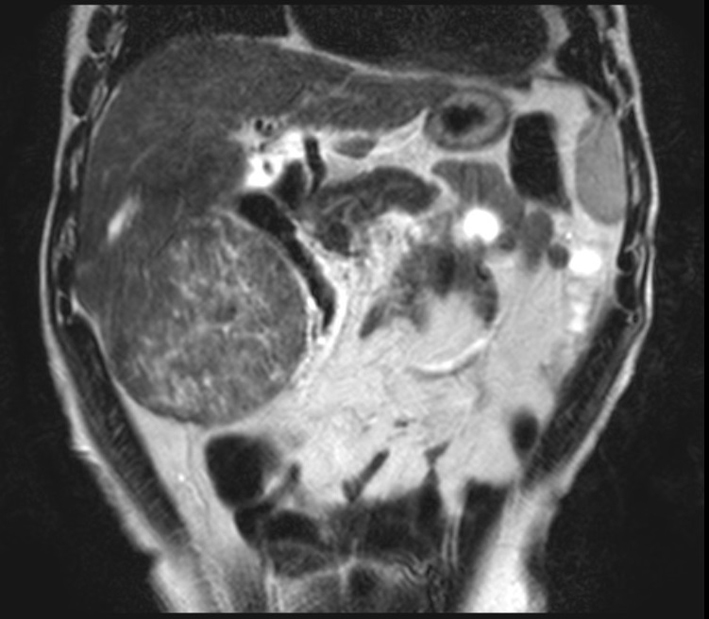
Figure 1. Abdominal contrasted MRI, T2-weighted, showing the tumor. It presented close proximity to the right kidney and the hepatic flexure of the colon.
| Gastroenterology Research, ISSN 1918-2805 print, 1918-2813 online, Open Access |
| Article copyright, the authors; Journal compilation copyright, Gastroenterol Res and Elmer Press Inc |
| Journal website http://www.gastrores.org |
Case Report
Volume 7, Number 5-6, December 2014, pages 146-148
Hypervascular Lesion in a Cirrhotic Liver: A Case Report
Figures

